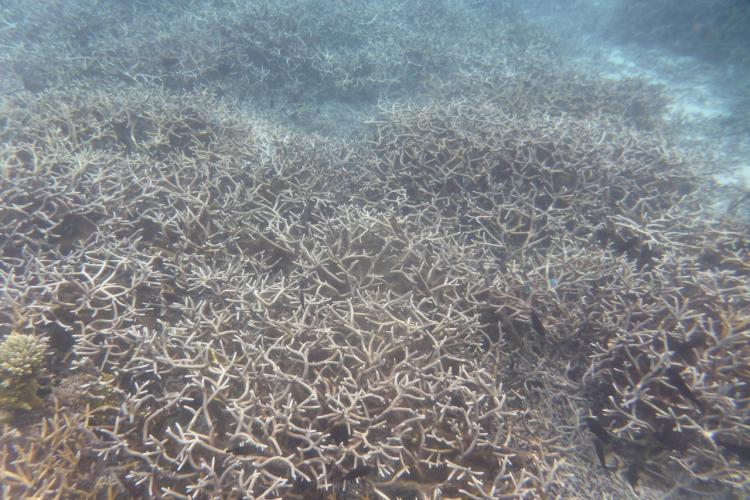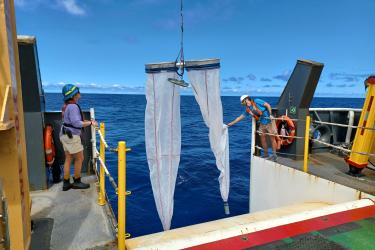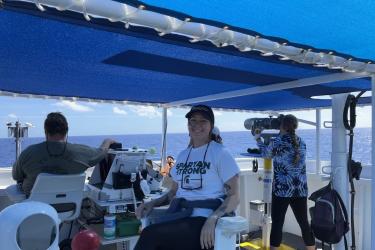The final leg of the Samoa Archipelago Fisheries Research Mission took place around the islands of Upolu, Manono, and Savai‘i, Samoa. During this leg, researchers from two Samoan agencies, the Ministry of Natural Resources and the Environment and the Ministry of Agriculture and Fisheries joined the expedition. Both agencies brought their own research priorities aboard but also assisted the NOAA researchers in their mission.

Researchers conduct snorkel surveys to assess coral bleaching.
The Ministry of Natural Resources and the Environment assigned two researchers to conduct coral bleaching and seagrass surveys. They joined NOAA researchers to survey coral bleaching at 23 sites around Savai’i and Upolu. Preliminary findings indicate:
- The reef slope is not as affected by bleaching as the reef flat:
- Reef slope is 10% bleached with 10% severity and primarily Pocillopora species.
- Reef flat is 20% bleached with 25% severity and primarily Acropora.
- The 2015 bleaching event was more severe (60-70% bleached corals) then the current event.
- In general, Samoa does not appear to be experiencing bleaching as severe as other places in the South Pacific (e.g. the Great Barrier Reef) however, it is important to note that there is minor bleaching related to increased water temperature.

Researcher Maria Satoa surveys the seagrass beds and collects samples around Manono tai Island.
Researchers also conducted a seagrass snorkel survey around Manono tai Island. The entire island was surveyed in one day. Maria Satoa is an extreme seagrass snorkel surveyor! Preliminary findings indicate:
- Confirmed two species of seagrass around the island (Halophila ovalis and Syringodium isoetifolium).
- Both species were found in shallower water but Syringodium isoetifolium was less abundant in deeper water.
- The southwest side of the island had the greatest seagrass density (90% coverage) and the southeast had the lowest density (2%).
- Both species on the western-most point of the island had cyanobacteria growing on the leaves.

NOAA and MNRE researchers (left) consult about cyanobacteria growing on seagrass leaves (right).
The Ministry of Agriculture and Fisheries supplied a large amount of fishing "local knowledge" and provided many staff members for NOAA operations. They participated in bottomfishing operations from small boats, spearfishing, and two surveys. At the end of each day, they jumped in and assisted with the tedious and sometimes messy fish processing. They also took the opportunity to search for many of the nearshore and offshore fish aggregating devices. Unfortunately, only one of the nearshore FADs and none of the offshore FADs were still in place.

Ministry of Agriculture and Fisheries staff participating in the various survey operations.
Over the last ten days, we learned about many aspects of Samoan culture. We learned how to shred coconuts, the names of Samoan fish, and fishing techniques and our vocabulary was greatly expanded. It has been an honor and privilege to work with the Samoa researchers and we look forward to many more collaborative efforts. Fa’afetai.

Ministry of Agriculture and Fisheries staff, keeping things safe in survival suits!


